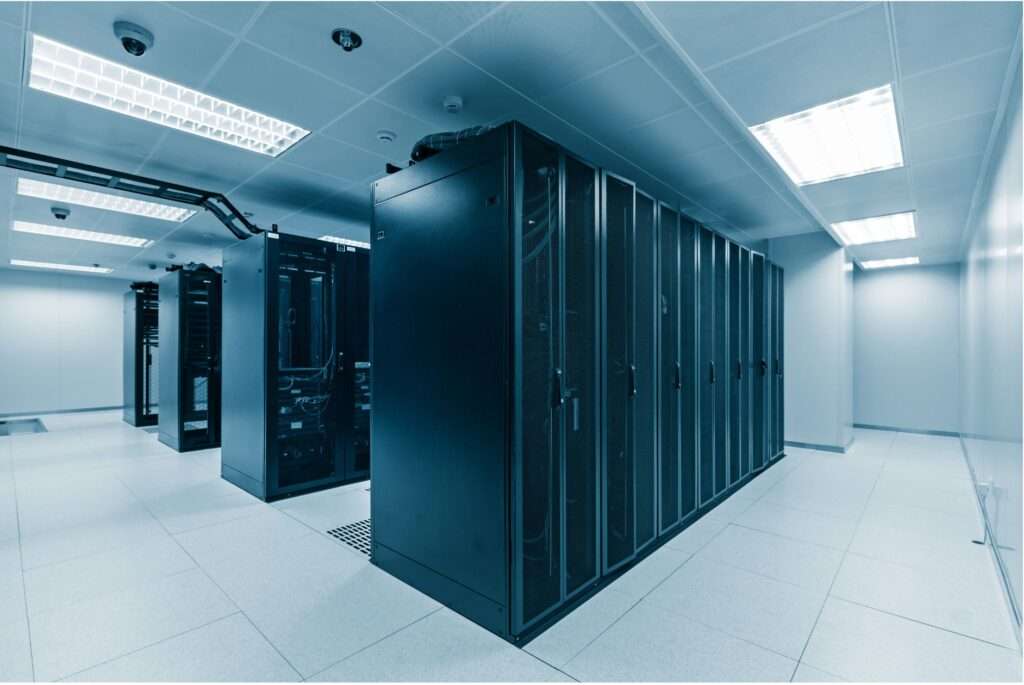Understanding Data Center
A data center is a facility used to house computer systems and associated components, such as telecommunications and storage systems. It provides the necessary infrastructure to store, manage, and disseminate data and applications.
Why are Data Centers Important?
Data centers are the backbone of modern digital infrastructure, supporting everything from social media and cloud services to online transactions and enterprise applications. They ensure data availability, security, and efficient processing, which are critical for business continuity and innovation.
Components and Infrastructure
Servers
Role of Servers in Data Centers
Servers are the workhorses of data centers, processing and storing data, running applications, and managing network resources. They come in various forms, including rack servers, blade servers, and tower servers, each optimized for different tasks and scalability needs.
Networking
Networking Basics
Networking components in a data center include routers, switches, firewalls, and load balancers. These devices facilitate data transfer within the data center and to external networks, ensuring efficient and secure communication.
Importance of High-Speed Connectivity
High-speed and reliable network connectivity is essential for data center performance. Advanced technologies like fiber optics and software-defined networking (SDN) enhance data transfer rates and network flexibility.
Storage
Types of Data Storage
Data centers use various storage solutions to manage data efficiently. Direct-Attached Storage (DAS) offers fast access but limited scalability. Network-Attached Storage (NAS) enables network-based file sharing. Storage Area Networks (SAN) provide high-speed block-level storage. Cloud storage is scalable and internet-accessible. Solid-State Drives (SSD) are high-performance and reliable, while Hard Disk Drives (HDD) are cost-effective for large data volumes. Tape storage is ideal for economical long-term archival and backups.
Data Management and Backup Solutions
Effective data management strategies and robust backup solutions ensure data protection and quick recovery in case of failures or disasters.
Role of Software in Data Centers
Software
Software in data centers includes operating systems, virtualization software, management tools, and security applications. These tools help manage resources, automate processes, and enhance security and performance.
Importance of Virtualization
Virtualization technology allows multiple virtual machines to run on a single physical server, optimizing resource utilization and simplifying management.
Cabling Infrastructure
Types of Cabling
Cabling infrastructure includes fiber optic and copper cables that connect servers, storage devices, and networking equipment. Proper cabling ensures efficient data transfer and minimizes latency.
Cable Management Best Practices
Effective cable management reduces the risk of outages, simplifies maintenance, and improves airflow, which is essential for cooling.
Power Infrastructure
Power Supply Systems
Data centers require reliable power supply systems, including uninterruptible power supplies (UPS), backup generators, and power distribution units (PDUs). These systems ensure continuous operation even during power outages.
Energy Efficiency Initiatives
Adopting energy-efficient technologies and practices helps reduce operational costs and environmental impact.
Cooling Infrastructure
Cooling Systems
Efficient cooling systems are critical for maintaining optimal operating temperatures and preventing equipment overheating. Solutions include air conditioning, liquid cooling, and free cooling techniques.
Innovations in Cooling
Innovations like liquid immersion cooling and AI-driven cooling management are enhancing energy efficiency and reducing environmental impact.
Physical Security
Security Measures
Physical security measures include surveillance cameras, access control systems, and biometric authentication to protect against unauthorized access and physical threats.
Importance of Location
The geographical location of data centers impacts security, accessibility, and risk factors like natural disasters.
Function and Importance
Key Functions of Data Centers
Data centers store, process, and distribute large volumes of data. They support critical business operations, provide cloud services, and enable disaster recovery and data backup.
Impact on Businesses
Reliable data center operations ensure business continuity, enhance customer experiences, and support innovation.
Future Trends and Innovations
Edge Computing
What is Edge Computing?
Edge computing involves processing data closer to where it is generated, reducing latency and bandwidth usage. It is essential for real-time applications like IoT, autonomous vehicles, and AR/VR.
Benefits and Challenges
Edge computing offers improved response times and reduced data transfer costs, but it also poses challenges in terms of security and infrastructure management.
Green Initiatives
Sustainable Data Centers
Green data centers use energy-efficient technologies, renewable energy sources, and advanced cooling systems to minimize environmental impact.
Innovations in Sustainability
Innovations such as AI-driven energy management and the use of sustainable materials in construction are driving the shift towards greener data centers.
Artificial Intelligence (AI) Integration
AI in Data Centers
AI technologies are being used to optimize data center operations, from predictive maintenance and energy management to security and data analysis.
Benefits of AI Integration
AI enhances operational efficiency, reduces costs, and improves reliability and security.
Hybrid and Multi-Cloud Approaches
What is Hybrid Cloud?
Hybrid cloud combines on-premises data centers with public and private cloud services, offering flexibility and scalability.
Multi-Cloud Strategies
Multi-cloud strategies involve using multiple cloud services from different providers to avoid vendor lock-in and optimize performance and cost.
Advantages and Considerations
Hybrid and multi-cloud approaches offer flexibility, resilience, and cost efficiency but require careful management and integration.

